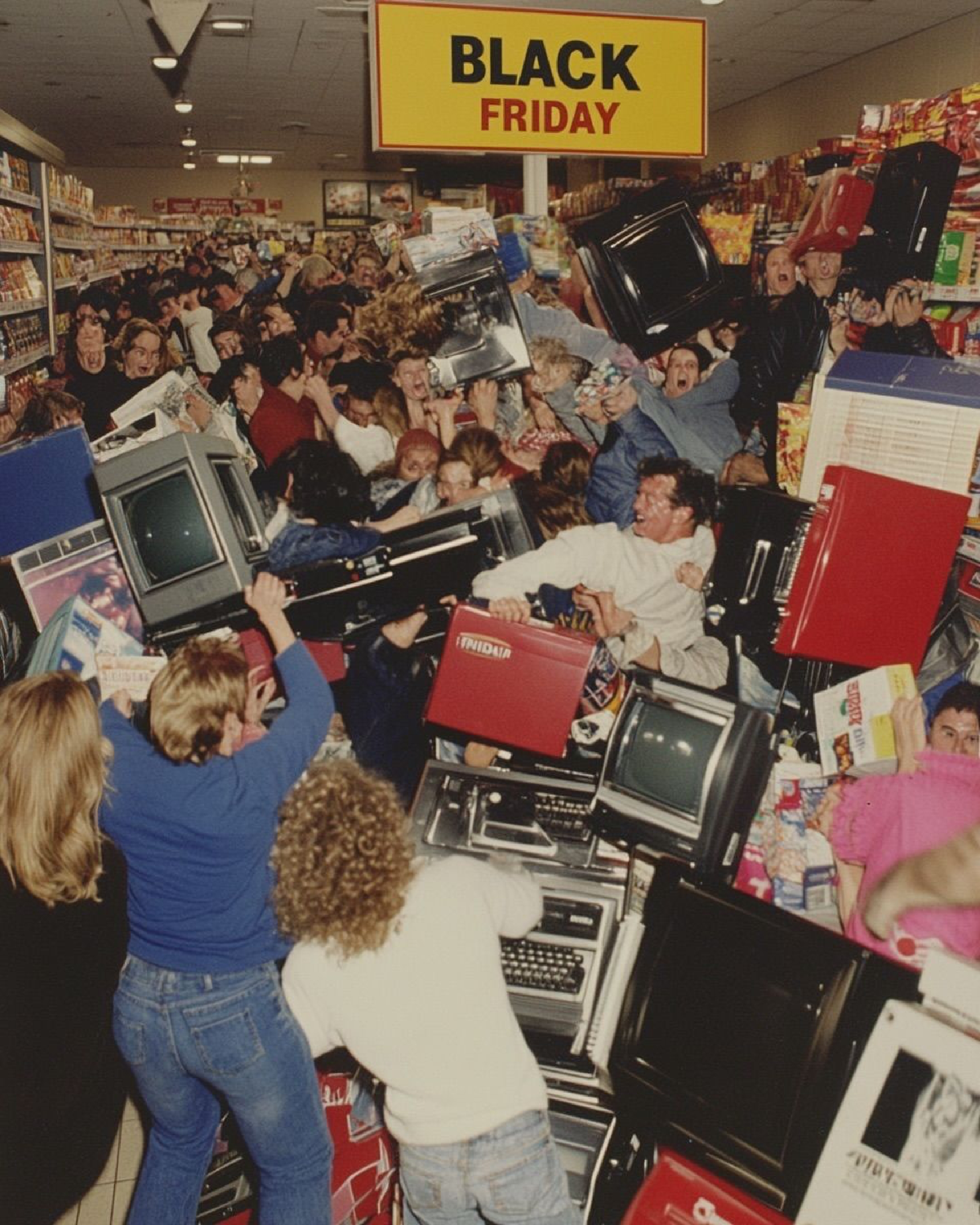Even amid tighter budgets, many consumers remain committed to gifting – but why and how they choose gifts is changing. Broadly, 2025 shoppers say they will spend about 5–10% less on gifts this year, yet most still plan to exchange presents to preserve traditions. Retailers report gift buyers want value and meaning even more than before. As one consultant puts it, “brands can’t rely on their year-round strategies to tap the gifting crowd” – gift-buyers are motivated by the recipient’s needs and by emotional context, not just price. In short, shoppers are more selective: 84% say they’ll cut overall spending in 2025 due to economic pressures, but they also prioritize gifts that feel worth it. This means many still splurge on small luxuries or experiences, while cutting back on big-ticket items.
Utility vs. Luxury
Cost concerns have made utility a key factor: people are hunting for practical gifts or “must-have” splurges. For example, younger shoppers are applying a “worth it” mindset: instead of simple price comparisons, they measure a gift’s perceived value across quality, meaning and alignment with values. In practice this means a $40 personalized item can be far more appealing than a $400 generic one. Yet at the high end, luxury gifting remains strong – especially among affluent and socially-active groups – but “luxury” today often means unique experiences or ethically made goods, not just status symbols. Brands are redefining premium by promoting emotional impact over prestige: as one analyst notes, new luxury consumers care “how something makes you feel” more than whether it looks expensive.
Products vs. Experiences
The experience economy is in full swing. Unlike the old model of boxed goods, many 2025 gift budgets shift toward experiences and services. Surveys find Gen Z in particular prefers memories over merchandise – over 50% of young luxury shoppers now prioritize experiences or storytelling over owning “things” Travel, concerts, classes and “virtual experiences” (like VR trips or online courses) have soared. Even tech gifts are sold as experiences (think VR headset or smart home class). However, tangible gifts aren’t disappearing – rather, people often pair products with an experience (e.g. a cooking kit + a local class). The takeaway for retailers is that gift packages and “moments” can be as important as the item itself. (And when budgets tighten, some shoppers will still choose a practical product with lasting use over a fleeting splurge.)
Ethical, Sustainable & Local Gifting
Conscious consumerism is now a core gift priority. Eco-friendly, ethical and local options are rising fast. Nielsen reports 46% of global consumers are more likely to buy eco-friendly products – and gift-givers are no exception. Shoppers actively seek out sustainably made or certified goods: Fair Trade chocolates, B Corp skincare, or even second-hand luxury items. Data show about 40% of buyers prefer to shop small or local for gifts, partly to support communities and partly to find unique items. Packaging has become part of the gift: plantable wraps, recycled boxes, and zero-waste bundles are hot. In fact, “ethical brands” and transparent sourcing can be the selling point itself. For brands, this means highlighting any eco credentials (certifications, recycled content, charitable partnerships, etc.) right in the product description and gift guide.

Digital & Virtual Gift Trends
Digital gifting has gone mainstream. Gift cards, e-gift certificates and online experiences are surging as flexible options. The gift card market now measures in the trillions worldwide. Retailers are investing heavily in digital gift card programs: one industry report notes a “shift to digital-only gift cards” to match consumer preference. Best-in-class gift card programs offer seamless omnichannel access (web, mobile, apps), instant personalization (custom messages or designs), and easy checkout. Digital gifts aren’t just cards – they include NFTs, online subscriptions, and even virtual concerts or game credits. Augmented reality (AR) tools are also emerging (for example, apps that let you “place” a gift in your home before buying). All this means retailers should make gift browsing and delivery as digital and friction-free as possible.
The Psychology of Gifting
Gifting isn’t just commerce; it taps deep human emotions. Connection and reciprocity are key drivers. Psychologists note that giving and receiving activate brain reward centers – gifts trigger gratitude, strengthening social bonds. In fact, Cialdini’s principle of reciprocity explains why even an unasked-for gift makes us feel obliged and positive toward the giver. This “gift effect” means a well-chosen gift can create loyalty (as one corporate study found, prospects are 3.5× more likely to respond after getting a thoughtful gift). In everyday gifting, people buy to celebrate milestones (birthdays, holidays, achievements) and also to connect (showing love or support). Obligation plays a role too – cultural norms and social expectations (think weddings or baby showers) compel purchases. Overall, emotions like joy, gratitude and pride guide a gift-buying decision more than logic or budget alone.
Personalization & Uniqueness
A top reason shoppers complete a gift purchase is making it feel personal. Today’s consumers crave unique presents that feel hand-picked. Data show around 65% of consumers bought a personalized gift last year, and 80% say personalized gifts feel more thoughtful. In the age of social media, a gift isn’t just an item, it’s a way to express the relationship. People use gifts to signal how well they know someone or to reinforce identity: a custom photo book, a monogrammed jacket, or even a playlist can hit harder than a generic store-bought item. Brands can tap this by offering customization options (engraving, photo upload, personal messages). The emotional payoff is real: as one analyst noted, a $40 gift that feels truly personalized can generate more loyalty than a $400 one-size-fits-all purchase.
Social Media & Aspirational Gifting
Social networks now shape gift ideas as much as friends do. In fact, a recent survey found 45% of shoppers look to social media for gift inspiration, more than from friends/family or TV. Among Gen Z and Millennials, social channels are the top source for holiday gift ideas. Shoppers scroll Instagram Reels or TikTok for “gift guide” clips, trust influencers’ recommendations, and share wishlists online. Crucially, 38% of consumers now trust user-generated comments on social posts when choosing a gift (slightly more than the 35% who trust paid influencer picks). This means visual platforms can make gifting aspirational: posting beautiful unboxing videos or “gift haul” content influences what people want to buy. Brands that showcase real people enjoying products (rather than slick ads) tend to resonate more. In short, visibility and authenticity on social media drive gift trends – a popular trend or hashtag can send specific products flying off shelves overnight.
Actionable Insights for Brands
To turn these trends into sales, brands need to think like a gift. Below are key tactics:
- Position Products as Gifts: Treat gift-giving as its own customer segment. Create dedicated “Gifts” collections or sections on your site. In product pages and ads, use language like “perfect for [occasion/person]” to spark ideas. Emphasize how items solve gift needs (e.g. “Give them a spa day at home” or “Your best friend will love this”). Highlight any personal or emotional angle – for example, promote the story or values behind the product.
- Leverage Storytelling & Social Proof: Weave each product into a narrative. Show real-life use cases: a family opening boxes on video, or a user-generated TikTok unboxing. Story-driven marketing (videos or blog posts) can help gift-buyers see the emotional payoff of your products. Encourage customers to share how they used a product as a gift; social testimonials can reassure others. Authentic stories on social channels are especially powerful, since 90%+ of consumers expect brands to listen and respond on social media.
- Offer Bundles & Gift Sets: Bundling is a proven way to increase conversions. Curated gift bundles simplify decision-making (“pre-packed” combinations give buyers an instant package to gift) and boost average order value. For example, group complementary items (coffee mug + local roast; candle + book) and sell them at a slight discount or with gift-worthy packaging. Make these bundles gift-ready with festive wrapping and messaging options. Promote them as limited-time offers or holiday exclusives to create urgency.
- Optimize Seasonal Timing: Align campaigns with key gifting seasons (not just December – consider Valentine’s, Mother’s Day, Back-to-School, etc.). Use data-driven windows: 40% of holiday gift spending happens in the 5 days from Thanksgiving to Cyber Monday. Prepare by launching gift marketing early – for example, invest in SEO and paid search so that as soon as shoppers start looking for “gift ideas,” your brand appears. Even if your brand doesn’t run big discounts, you can join holiday themes with value-adds (like free gift-wrapping or exclusive product colors) to stay top-of-mind.
- Ensure Frictionless Gifting Experience: Make it super easy to buy gifts. Implement features like wish lists, gift registries, or “ship to friend” at checkout. Offer flexible payment (e.g. Buy-Now-Pay-Later) — one report notes BNPL gift purchases reached $8.3 billion in Nov 2023, up 17% year-over-year. Provide gift-wrapping or free shipping options at checkout. (Remember, even an extra button that says “This is a gift” with special packaging can reduce buyer hesitation.) For digital gifts, ensure instant delivery – email or SMS gift cards should be easy to send with personal notes.
- Post-Purchase Engagement: After the sale, keep the connection. Follow up not only with the purchaser, but consider messaging the recipient (if possible) or at least offering gift recipients a discount or loyalty incentive. Research shows post-purchase emails and offers can convert one-time gifters into repeat customers For example, send the gift buyer an email with “Thank you” plus a coupon, and send the recipient an email introducing your brand (“Your friend thought you’d love this gift” with a promo code).
- Target Givers vs. Self-Buyers Differently: Recognize that some customers buy for others and some treat themselves. Data show many shoppers (especially Gen Z) are now “self-gifting” – Gen Zers plan to spend roughly 39% of their holiday budget on themselves. Tailor marketing accordingly: for self-shoppers, run campaigns like “Pamper Yourself” or “Gifts for You” and highlight deals/discounts. For others, use gift-oriented messages (“Surprise mom!” or “Make his birthday special!”). In ads and emails, explicitly segment these two audiences. For instance, if someone previously bought something as a gift, target them with reminders or suggestions for similar occasions; if they’ve bought for themselves, show new products with “you deserve this” language.
By staying attuned to these trends and psychology, brands can make gifting easy, thoughtful, and rewarding. In 2025, that means highlighting value and values in every gift offer – whether it’s a practical gadget wrapped in recycled paper, an immersive experience booked online, or a small indulgence that feels meaningful. Tap into emotion through personalization and storytelling, reduce purchase friction, and speak directly to both generous gifters and savvy self-treaters. These strategies will help turn browsers into gift-buyers (and delight their recipients) in the competitive year ahead.






.svg)


.svg)
.svg)





